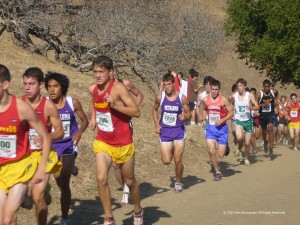
Persuading with Induced Cooperation
Induced cooperation is a form of persuasion. Persuasion is the process of changing minds. Persuasion is an everyday part of human discourse. It is used by salesmen, parents, teachers, and many others – basically all of us. Persuasion in mediation is a two-way street. Long before you try to influence another to moderate their demands or consider the other side’s point of view, chances are good that they will have tried to convince you to their position.
It’s my experience in order to be an effective mediator, I must engage in various forms of persuasion. I do not engage in coercive or manipulative persuasion practices by which pressure brought to bear on reluctant participants to get a settlement. I do use a range of potential mediator interventions to help the parties resolve deeply held or competitively bargained differences. *
Induced Cooperation
In this form of self persuasion, parties work on a common task. These tasks are simple. I often conduct brainstorming sessions to generate all of the issues we need to resolve. It can also be a list of issues that there is an agreement. Conversely, it can be a list of where they do not see eye to eye.
They can be even simpler, such as a shared snack time. This is a time honored tradition in resolving conflicts. It could be a good reason why diplomats participate in a lot of social engagements. Sharing meals is central to the normal socialization in almost every community of humans.
How it works
This self persuasion works by getting the parties to work together and therefore build relationships and generate communication between each other. These can be very simple activities. I usually bring refreshments to the mediation. The act of sharing a meal builds relationships.
More commonly, while in joint session, I conduct some brainstorming activities. They might be a list of all that we need to accomplish before an agreement can be reached. In others, it could what areas or facts that both parties can agree upon. I would drill down to everything they could agree upon no matter how small.
Effectiveness
By keeping the conversation going, this may reduce demonization of the other party. Often they have been at odds since the complaint was filed which in our current day and age can be several years of no contact other than through attorneys.
This process appears to produce greater group cohesion and attitude change. It is a team building exercise. It is a team in search of a settlement agreement. The chief purpose is to generate more and effective communication in the group. When more ideas are verbalized, participates become more attentive to and accepting of other peoples views. Everyone becomes slightly friendlier with greater satisfaction with group process. It becomes a team building exercise with better coordination of effort and orientation to the achievement of the task. Furthermore, it reduces polarity. There is less focus on differences, greater focus on similarities and commonalities of viewpoints. There is increased ability to engage in flexible thinking and to find creative solutions generating reduced egocentrism and increased ability to take the perceptions of others.
How to use it
I used induced cooperation in all stages of my mediation sessions. And I will use it in any way I can. They more I am able to get the real parties to talk to me and more importantly to each other the more likely there will be a solution to the conflict.
*Stark, James H. and Frenkel, Douglas N., Changing Minds: The Work of Mediators and Empirical Studies of Persuasion (2013). Ohio State Journal on Dispute Resolution, Vol. 28, No. 2, Pg. 263, 2013; U of Penn Law School, Public Law Research Paper No. 11-07
**Why the picture of Cross Country runners? It takes a lot of persuasion to get them to the finish line.
 About the Author: Ken Strongman (www.kpstrongman.com) has years of experience and a growing national reputation as a mediator and arbitrator. He has successfully resolved more than a thousand disputes in the fields of construction defects, real estate, intellectual property, and employment. He is also a Mediator and Arbitrator for FINRA.
About the Author: Ken Strongman (www.kpstrongman.com) has years of experience and a growing national reputation as a mediator and arbitrator. He has successfully resolved more than a thousand disputes in the fields of construction defects, real estate, intellectual property, and employment. He is also a Mediator and Arbitrator for FINRA.
© 2020 Ken Strongman. All Rights Reserved. Please do not copy or repost without permission.